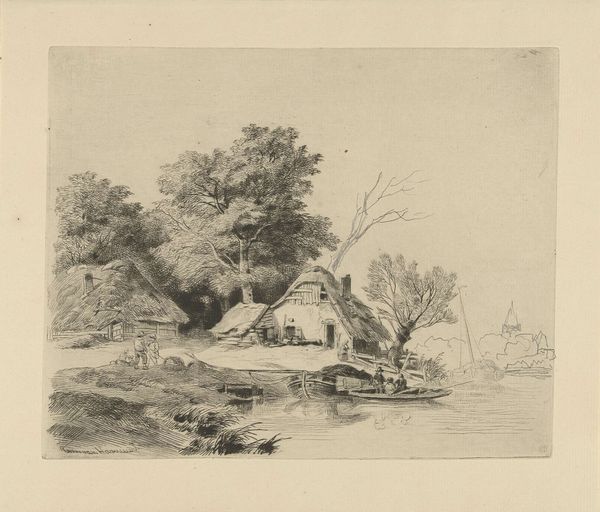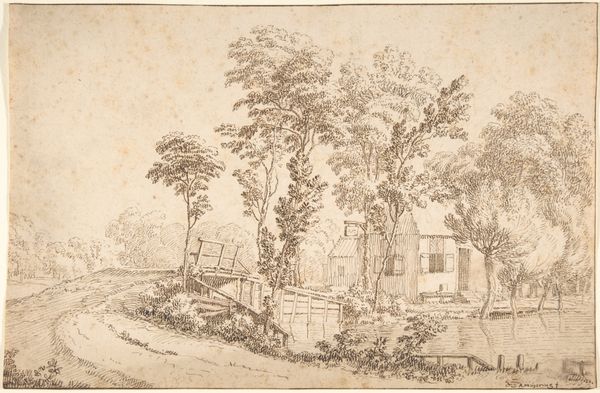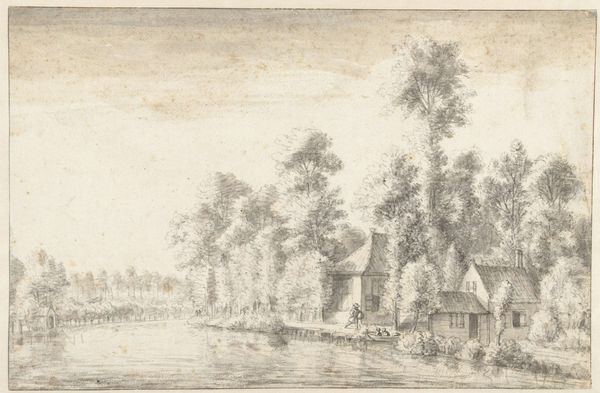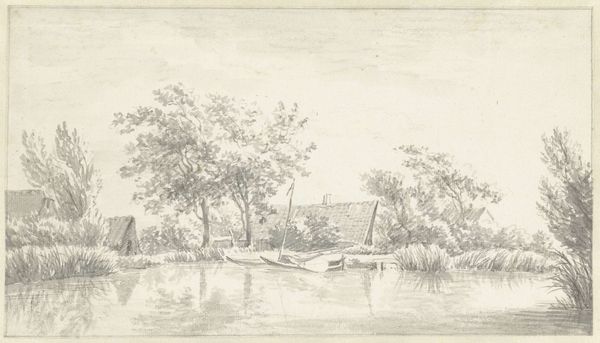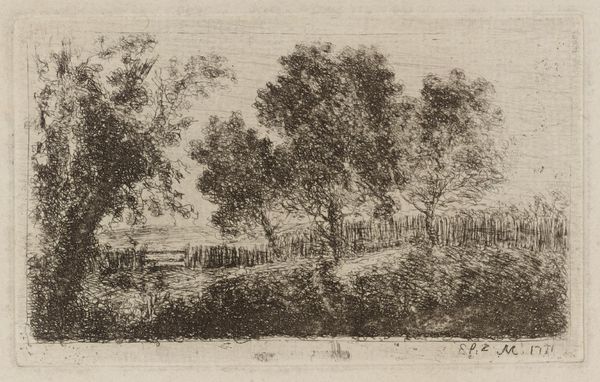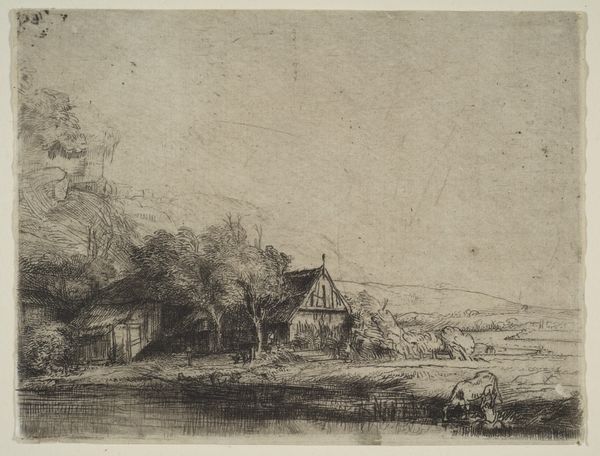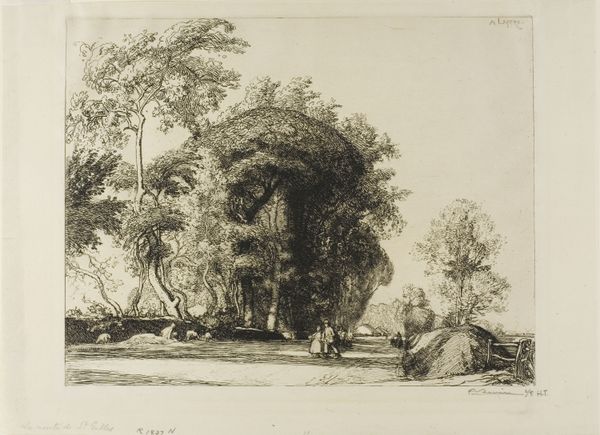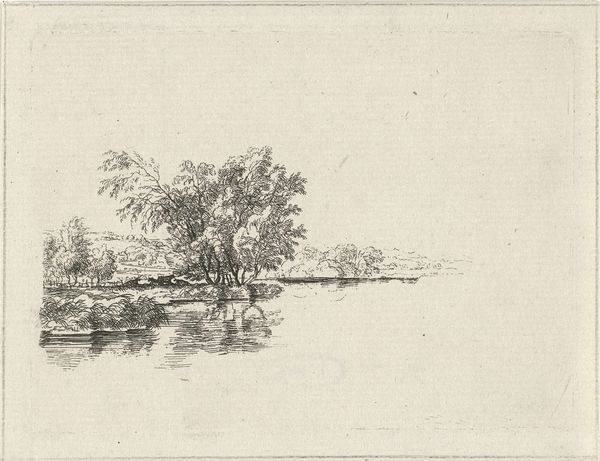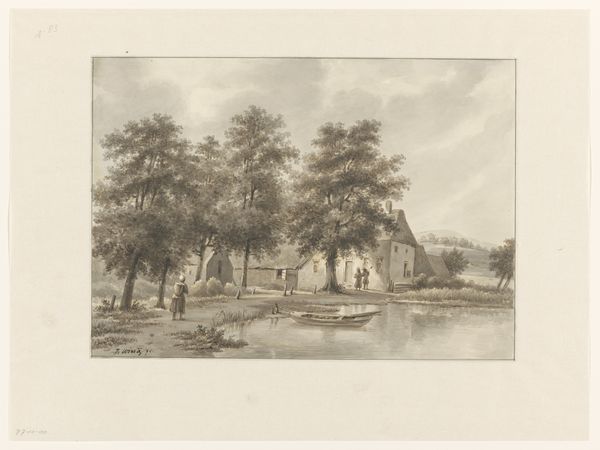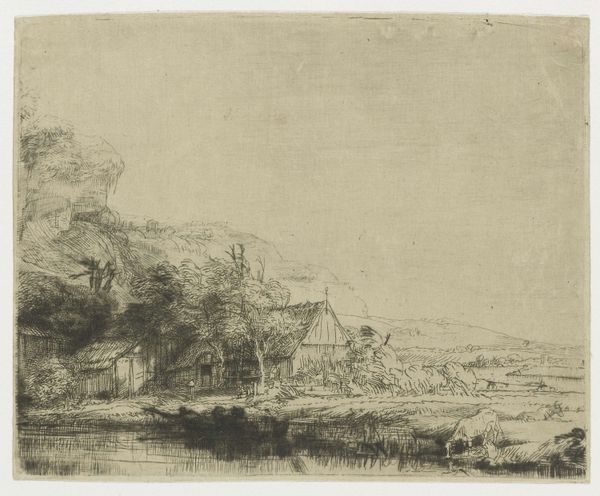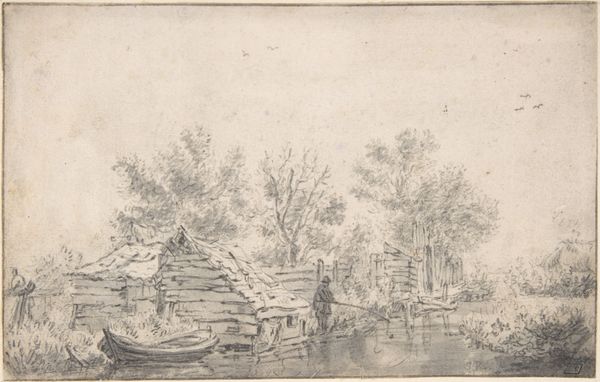
print, etching
#
art-nouveau
# print
#
etching
#
landscape
#
realism
Copyright: National Gallery of Art: CC0 1.0
Editor: This is Muirhead Bone's "Week Green Farm, Hampshire," an etching from 1914. It has a very subdued and calming feel, a kind of pastoral tranquility in black and white. What historical context shapes your view of this piece? Curator: Considering the time it was created, on the cusp of World War I, this tranquil scene reads as a powerful statement. Etchings like this played a crucial role in constructing national identity and idealizing the rural landscape. Bone presents a vision of England seemingly untouched by the industrial revolution and looming war. Editor: So, it’s almost a kind of propaganda? I wouldn't have seen it that way. Curator: In a subtle way, yes. These idealized rural scenes offered a powerful contrast to the grim realities of urban life and, soon after, the battlefields. Artists like Bone reinforced a sense of what was worth fighting for, bolstering national sentiment through visual means. Does knowing this alter your initial reading? Editor: It does. I still see the calm beauty, but it's overlaid now with this layer of political messaging, this idealized view of what England was, or what people wanted it to be. Curator: Exactly. The pastoral imagery operates within a carefully constructed visual rhetoric. This romanticized view of rural England had profound implications on national identity and social values at the time. Editor: It’s amazing how knowing the historical context can completely change your perception of a work of art. I’ll definitely look at landscapes differently now! Curator: Indeed. And it highlights how even seemingly innocent images are embedded in complex socio-political currents. Always question what realities the image presents, and what it obscures.
Comments
No comments
Be the first to comment and join the conversation on the ultimate creative platform.
